This post contains affiliate links.
Along with our solar power system, we have set up a relatively primitive water system in our tiny house.
I have mentioned our Berkey water filter before, but that is only one step in our water process.
It starts at a spring about 150 vertical feet down the mountain. Right now we collect water from the spring in aquatainers which we then carry up to the house.
We usually have to do this two or three times a week. We have considered pumping mechanisms but for now this works fine and it’s a reasonable way to get some built in exercise.
Eventually we are planning a rain catchment system so we will re-evaluate our needs at that time.
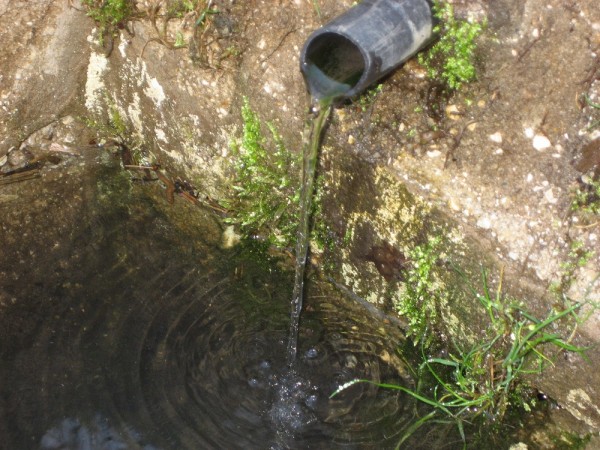
Photo by Laura M. LaVoie
Once the water reaches the house, we fill our Berkey. It takes about 3 gallons at a time. We also have a smaller commercially available Pur water filter outside which we fill for shower water and outdoor cleaning needs – we usually do dishes out on our outdoor kitchen surface.
I encourage you to continue reading below to learn even more about our off the grid water system.
Any water that is used for cleaning – whether it is dishes, hands or showers – is then collected in a 5 gallon bucket that hangs beneath the house on a hook below the drain in the shower. So yes, even when we have gray water in the kitchen (usually collected in the basin under the Berkey after washing hands, brushing teeth, or cleaning coffee cups) it gets poured down the drain in the shower. Since this a tiny house the shower is only steps away from the kitchen counter so it isn’t trouble to do it this way.
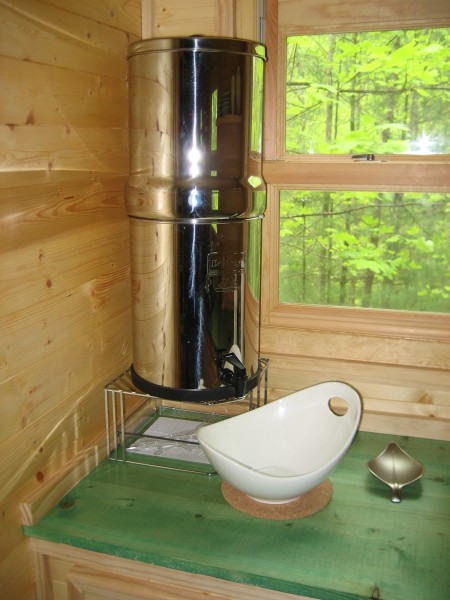
Photo by Laura M. LaVoie
If you want you can order a Berkey Gravity Water Filter just like mine here through Amazon.
Once a day, before the bucket gets too full for me to get it down by myself, I take the water to our artificial wetland for the final step in the process. We built this gray water system to filter the water before it goes back into the ground and becomes part of the natural eco-system. It is also important to note that we use only biodegradable soaps and shampoos for everything.
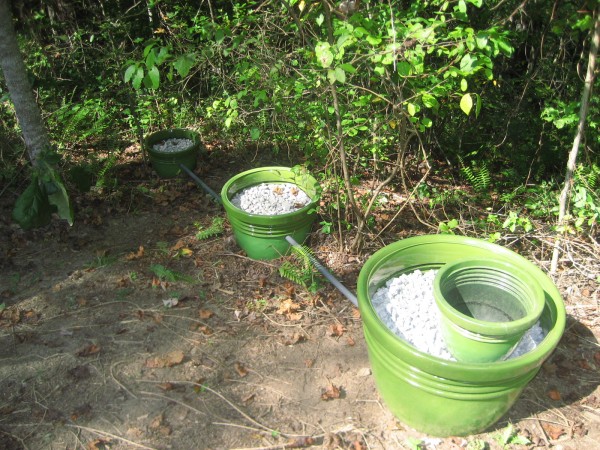
Photo by Laura M. LaVoie
Our artificial wetland needs just one more thing to be complete: irises. We are going to plant these water-friendly flowers in each pot to help naturally filter the water. The idea for any artificial wetland is to include plant life in the design and I had been thinking about what would be regionally appropriate for ours. I shouldn’t have been thinking so hard because one day I was walking along the creek that runs down our mountain to the road and realized that the banks were thick with yellow irises. The solution was born. I am waiting until the fall when I can transplant several plants from elsewhere on our land to the pots in the artificial wetland.

Photo by Laura M. LaVoie
So – I believe our tour of 120 square feet is complete. When a house is so small it doesn’t take long to show every detail. Is there something else you would like to know about our tiny house? Let me know!
This post contains affiliate links.
Laura LaVoie
Latest posts by Laura LaVoie (see all)
- Top 5 Things to do on a Rainy Day in Your Tiny House - October 20, 2013
- Top 5 Reasons I Love My Tiny House in the Fall - September 24, 2013
- 3 Tips You Should Know Before Building From a Tiny House Builder - September 18, 2013




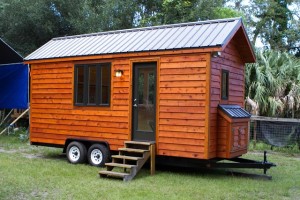
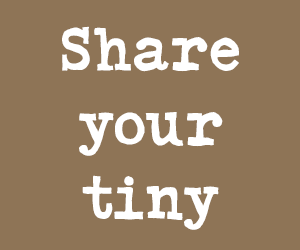
For off grid small homes I recommend using a 25 gallon water holding tank which will fit under most sinks and a DC shurflo pump for water to sinks and shower. An Eccotemp OD propane water heater costs pennies to run.
This can be run off a 50 watter solar panel and one deep cycle batt. They make berky filters that go no the end of a hose for prefiltering water.
A french drain can be used for grey water or a grey water wetland or a greywater holding tank can be dumped at any RV dump station.
For off grid small homes I recommend using a 25 gallon water holding tank which will fit under most sinks and a DC shurflo pump for water to sinks and shower. An Eccotemp OD propane water heater costs pennies to run.
This can be run off a 50 watt solar panel and one deep cycle batt. They make berky filters that go on the end of a hose for prefiltering water.
A french drain can be used for grey water or a grey water wetland or a greywater holding tank can be dumped at any RV dump station.
I envy you for your spring. At my place there are no lakes or streams (except in the rainy season) and people either drill a well, connect to a local water system if available or use rainwater collection systems. You aren’t allowed to connect to the system unless you have a full septic system and that adds up to a huge expense. Private wells are discouraged due to the limited groundwater supply on the island. You pay a certain amount of tax for just being next to the water pipes even if you aren’t connected but if you do connect it’s another large yearly fee besides. A friend of mine up north used to pump water up from a stream once a week or so to fill a large tank next to his house and it was gravity fed into the house from there. It would depend on how good a flow rate you had to “tap” into whether that was viable or not.
Is there a listing of biodegradable soaps, shampoos and cleaning products of which you are aware? Dr. Bronner’s products make my skin excessively dry and I am looking for an alternative.
You could make a ram pump to get your water up hill just google ram pump. No power needed
How clever!
Just wondering where the stand you have your Berkey on is from?